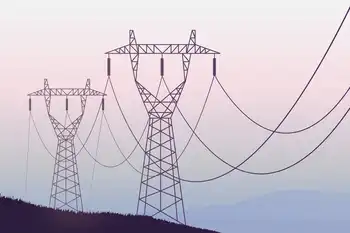Six Ontario utilities take 413 million kWhs off the grid since 2005
By Canada News Wire
Electrical Testing & Commissioning of Power Systems
Our customized live online or in‑person group training can be delivered to your staff at your location.

- Live Online
- 12 hours Instructor-led
- Group Training Available
According to the report, titled "Shifting into Future Gear: Progress Report 2006", the 1.7 million customers located in the CLD's service territories in Southern and Eastern Ontario saved 302.5 million kilowatt-hours in 2006 - enough to power 33,611 homes for one year. The 2006 results reflect a 274 per cent increase in electricity savings over 2005 - the year in which the CLD introduced its first conservation and demand management (CDM) programs. During the past two years, the CLD has invested over $61.9 million in CDM, removed a total of 413,065,155 million kilowatt-hours from the grid and reduced CO(2) emissions by just over 116,000 tonnes.
"Since 2003, the McGuinty government has made available over $563 million for conservation initiatives through Ontario's local distribution companies", said Minister of Energy Dwight Duncan. "The Coalition of Large Distributors has shown tremendous leadership in spearheading new conservation and demand management programs - four of which are to be rolled out later this summer by utilities across the province. The Coalition is to be commended for its innovative approach, for its spirit of collaboration and for its ground-breaking work in building Ontario's conservation culture."
Some of the CDM programs being delivered by the CLD that are fast becoming household names with consumers include "Smart Avenues" (developed by Enersource Hydro Mississauga), "Fridge & Freezer Bounty" (developed by Hydro Ottawa), "Summer Challenge" and "peaksaver" (developed by Toronto Hydro-Electric System Limited), "Haul Away Your Energy Hog" (developed by PowerStream) "SmartPak" back packs (distributed by Horizon Utilities) and "Great Exchange" (launched jointly by Veridian Connections and Toronto Hydro-Electric System Limited).
The success of the 2006 CDM programs is reflected in the following highlights:
- 8,088 fridges and freezers were retired
- 12,671 energy guzzling air conditioners were removed from service
- 26,745 peaksaver residential load control devices were installed
- 78,936 seasonal incandescent light strings were retired from service
- 546,052 retail coupons were redeemed
- 1.5 million compact fluorescent bulbs were provided through mass market programs
"This is a defining moment in terms of the environment, not just in Ontario but globally," said Jack Gibbons, Chair of the Clean Air Alliance.
"Conservation and demand management programs like those developed by Ontario's Coalition of Large Distributors show what it is possible to achieve when there is political will and a serious investment of money and skilled resources."
The Coalition of Large Distributors, which consists of Enersource Hydro Mississauga, Horizon Utilities, Hydro Ottawa, PowerStream, Toronto Hydro-Electric System Limited and Veridian Connections, provides electricity for 40 per cent of Ontario's electricity customers. The utilities are founding members of powerWISE(R) - the highly-recognized conservation brand launched in 2003 by Hamilton Utilities Corporation. Their goal is to continue to develop, incubate, pilot and fully implement conservation and demand management programs that support the Government of Ontario's plans to reduce peak electricity demand in the province by 5 per cent by 2007.











